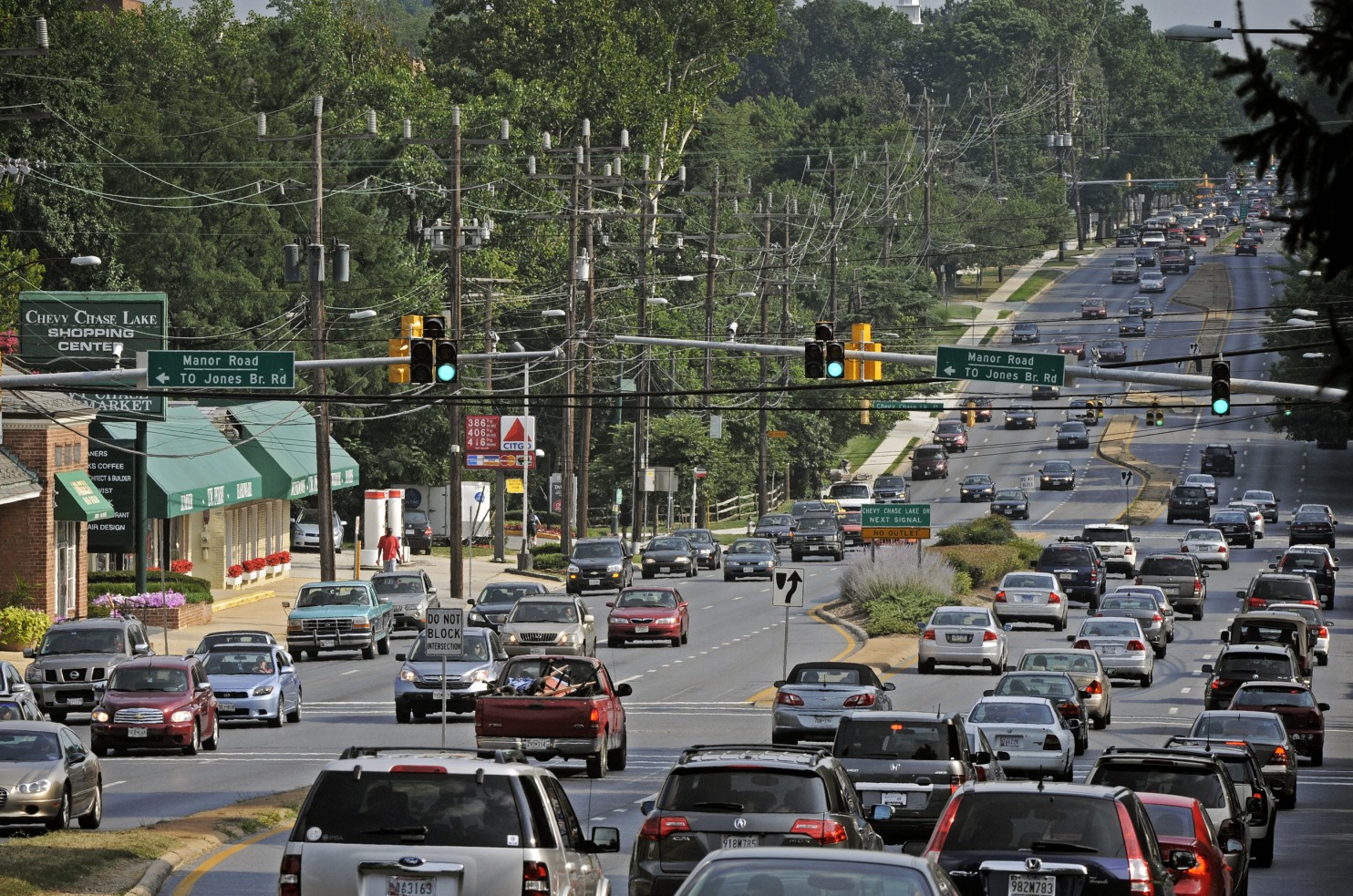Where the Purple Line Would Cross Connecticut
In a meeting with the Montgomery County delegation to the House of Delegates, MTA Executive Director of Transit Development and Delivery Henry Kay cited the Connecticut Avenue overpass as an example of the type of cuts that a bidder for the project might make in order to reduce costs.
Gov. Larry Hogan has asked the bidders for the project to find ways to reduce the cost of the proposed light-rail project. However, the directions exclude cutting the length of the line or converting it to a bus-rapid transit (BRT) system. As a result, expensive features like the overpass remain one of the few ways to cut costs.
The change would greatly worsen traffic on Connecticut Ave., already bumper-to-bumper during rush hour. Massive new development slated around the stop at Chevy Chase Lake would exacerbate the problem, as the great majority of new residents along with visitors to commercial properties would still drive.
The change would represent a major loss for the Washington Area Bicyclist Association, which has lobbied heavily against any plan to eliminate the overpass in favor of an at-grade crossing. WABA sold the Purple Line to its membership as improving bike travel. The change would mean that not only would there be no fast crossing at Connecticut. Additionally, the current underground bike crossing at Wisconsin Ave. will be eliminated even though the rail line will remain below ground.


